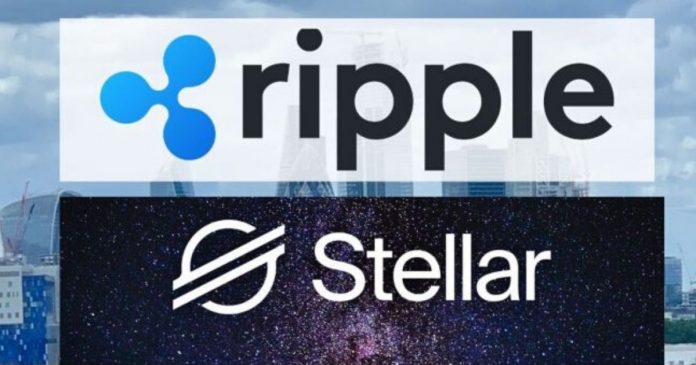Stellar (XLM) and Ripple (XRP) have very similar blockchain protocols in the crypto and blockchain space. However, despite the obvious similarities (they even share the same co-founder in Jed McCaleb), they are quite different from each other.
Similarities
Before moving on to their differences, let’s take a quick look at the similar features that Stellar and Ripple both possess.
- Both blockchains have private nodes.
- There are restrictions on mining on the platforms.
- They both function using distributed ledger technology or DLT.
- They facilitate instant transactions, especially international transfers and payments.
Differences
- Ripple makes use of the proof-of-correctness algorithm whereas Stellar employs the consensus protocol.
- Ripple is also more centralized than the Stellar blockchain.
- XRP is Ripple’s native token, which is essentially inflationary. So, XRP can have increased circulation. On the other hand, Lumen (XLM) is the native token of the Stellar ecosystem. It is essentially deflationary, meaning it has decreased circulation.
- Ripple is profit-oriented while Stellar is a non-profit organization.
- Major applications of Ripple protocol involve banks. On the contrary, Stellar has its most use in individual and small business transactions.
About Ripple
Chris Larsen and Jed McCaleb founded Ripple in 2012. The proof-of-correctness protocol which is applied every few seconds by all nodes, ensuring accuracy and agreement on the protocol.
The DLT has high-end applicability for use in banks and top financial institutions. It enables users to carry out cross-border transactions faster, seamlessly and at very little cost.
Ripple functions by eliminating the need for middlemen when carrying out cross-border transactions. Several financial institutions and banks have employed their services due to their liquidity.
However, Ripple use is not limited to institutional use alone, and anyone can make use of its payment protocol.
About Stellar
As mentioned, McCaleb is the founder of Stellar too. It functions by assisting businesses in payment processing with native assets. It, along with its Development Foundation, is the result of a Ripple hard fork in 2014.
The open-source, distributed blockchain enables the cross-asset transfer of not just money but also values. Integration on the Stellar blockchain protocol will immediately expose users to an open, worldwide financial network where all participants have the same access and economic participation.
According to its website, Stellar is out to combat poverty while also building individual skills. To do this it “connects people to low-cost financial services “. Hence the reason it is referred to as a non-profit organization.
Since profit-making is out of the picture, Stellar meets its working costs in several unique ways:
- It uses 5% of its initial Lumens separated as operational costs.
- It also accepts tax-deductible donations from the public.
Moreover, Stellar works to facilitate cheaper and more seamless exchange of currencies as long as it has sufficient users on its platform.
In conclusion
Ripple, unlike Stellar, is a profit-oriented protocol that currently boasts of approximately 75 banks on its network. It is also based on a closed system, so, the general public cannot view or effect changes on it.
Ripple has raised a total of $93.6 million and has a team of more than 200 employees. Stellar Development Foundation, on the other hand, has raised $3 million and has about 20 top-notch employees.
At the time of publishing, XRP was trading at $0.192995 USD. While XLM was trading at $0.049925 USD.



























